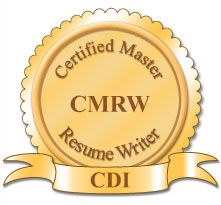 For several weeks, I’ve had the May 2016 issue of Success Magazine open on my desk. I had gotten about half-way through the issue when I stalled in the middle of an article by Sophia Dembling about assertiveness. More pressing papers piled on top of it. In fact, I forgot it was there until today, when I set out in search of material for my weekly blog.
For several weeks, I’ve had the May 2016 issue of Success Magazine open on my desk. I had gotten about half-way through the issue when I stalled in the middle of an article by Sophia Dembling about assertiveness. More pressing papers piled on top of it. In fact, I forgot it was there until today, when I set out in search of material for my weekly blog.
I’ve been looking a lot at my own methods of assertiveness lately, so the article jumped out at me this morning. Just last weekend, I participated in a workshop called “Group Process.” There, I was part of a group that spent 14 hours on Saturday and six hours on Sunday simply being with each other to see what we would create in our interactions. The feedback I got from the group is that I have a tendency to want to dominate the conversation. This did not surprise me. It’s not that I talk more than other people in the group, but I do like to get attention, sometimes by stirring things up.
Being assertive often requires not being nice, and I am starting to accept the fact that I am not a “nice” person. I am willing to hurt people, and to be hurt myself, in service of telling the truth and getting satisfied. Here are some examples, along with the attendant advice offered by Ms. Dembling:
1.) Accept the Learning Curve.
In our Group Process group, the topic came up of how each of us sees ourselves as functioning in a group. Someone spoke about himself, and I wanted to spend more time with him, with each group member giving him feedback before moving to the next person. So when another group member started sharing about how she saw herself in the group, I interrupted her and said I’d like to spend more time on the first person. She was hurt and angry with me for doing that.
I did end up getting part of what I wanted: I shared my thoughts with the first person. But then the conversation got derailed as the second woman and I worked through what had just happened. Frankly, we did not do the best job of resolving the conflict, despite my strong desire to do so. My assertiveness had created a rift in my relationship with this woman that will take more work to repair.
2.) Control Thyself.
In another group, we were voting on who would fill a particular role. One person enthusiastically went for the role and was quickly voted in with no opposition. I did not trust that he was the best person for the job, so I asked someone else if he wanted the position, which he did. We then had a vote between the two of them. Person #1 still won, and I still was not satisfied, so I asked for further consideration and discussion. As you can imagine, Person #1 had some feelings about my behavior. But in the end, the group made a much more considered decision. Person #1 still got the role, but we were all much more clear about why he was chosen and what value each member of our team could have brought to the role.
As the Success Article pointed out, we can’t control people. We can only control ourselves and our own behavior and words. I felt good in this instance that I spoke up and went for my full satisfaction, and maintained the respect of my group in the process.
3.) Pick a Delivery Mode.
With the first group, we have eight more weeks of work to do together. I wrote an email suggesting that we assign roles within our group so we have specific people designated to organize our calls, take notes for the group, and support our members in various ways. I immediately got pushback on this idea, with three out of four members saying no, that they did not want to take on any more work.
When I tried to explain that I wanted to make things easier, not harder, by having clear lines of responsibility for the things we were doing anyway, I was told that I was making things harder than they needed to be and that I was trying to control the group. As predicted by Randy J. Paterson, author of The Assertiveness Workbook: How to Express Your Ideas and Stand Up for Yourself at Work and in Relationships, things got worse. “Obnoxiousness” went up. And I began to question whether I ever did what I did.
Ouch. These are the times where I wish I had thicker skin – and that I had not used email, where misinterpretation is so easy, to express myself. I felt hurt, not seen, and even persecuted. But thankfully I am good at reaching out for support, which I did (by telephone!), and I was able to get more perspective. One group member was able to see things more the way I saw them and to talk through what could address my concern and the concerns of everyone else. I’m feeling confident that we will come to a solution that works for the whole group.
In all of these situations, what I truly wanted in the end was to be heard and understood. Yes I take a lot of risks and, someone observed, often “throw myself under the bus” when I see what I think is a better way to do things. As stated by Diana Bacon, a financial planner who coaches women entrepreneurs on their assertiveness, being assertive doesn’t mean people will do what you want. But it does “give you the confidence of knowing you can stake out your space in the world.”
I’m encouraged by Randy Paterson’s assertion that assertiveness is a set of skills that can improve over time. I definitely have room for growth, and I look forward to what’s possible.










